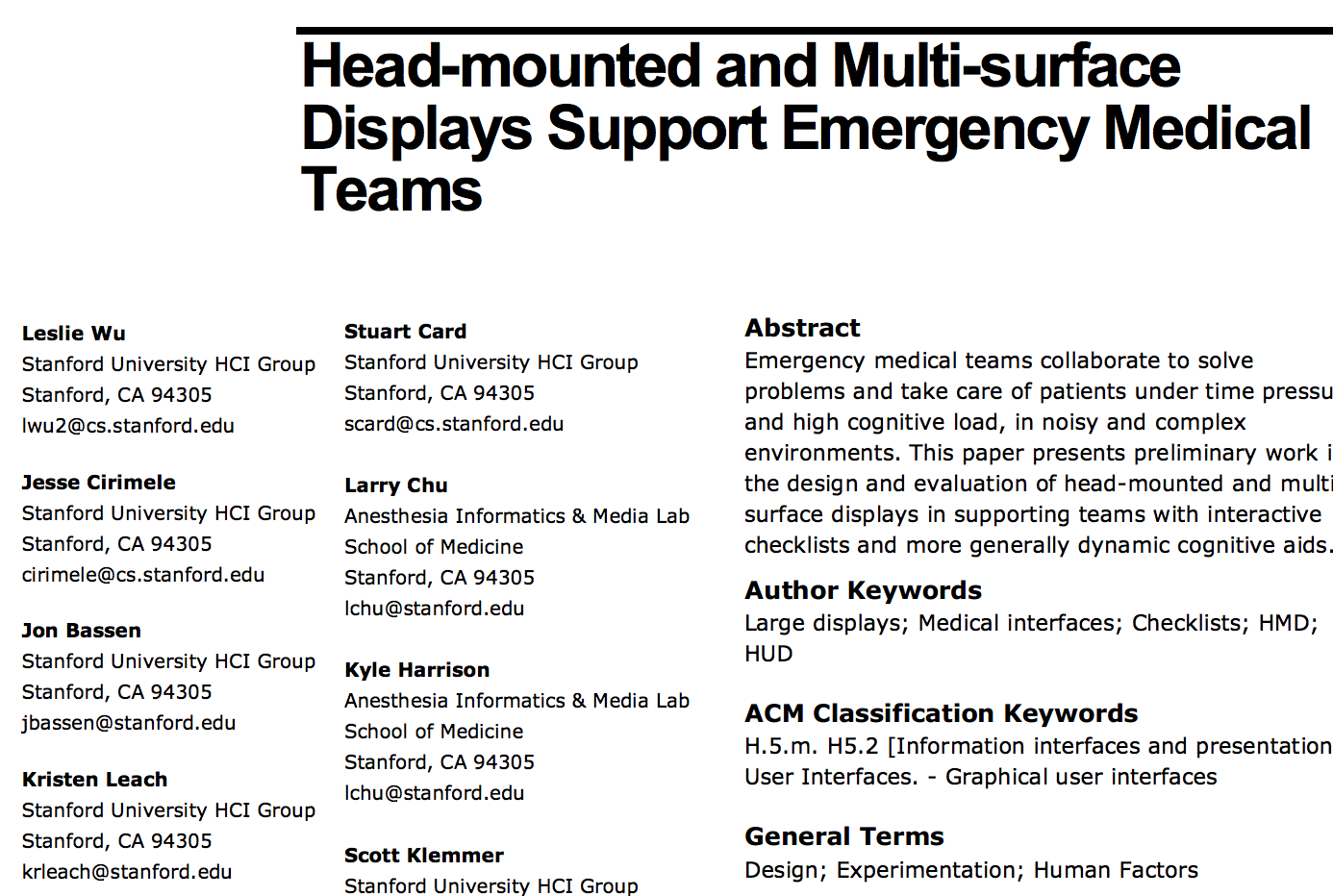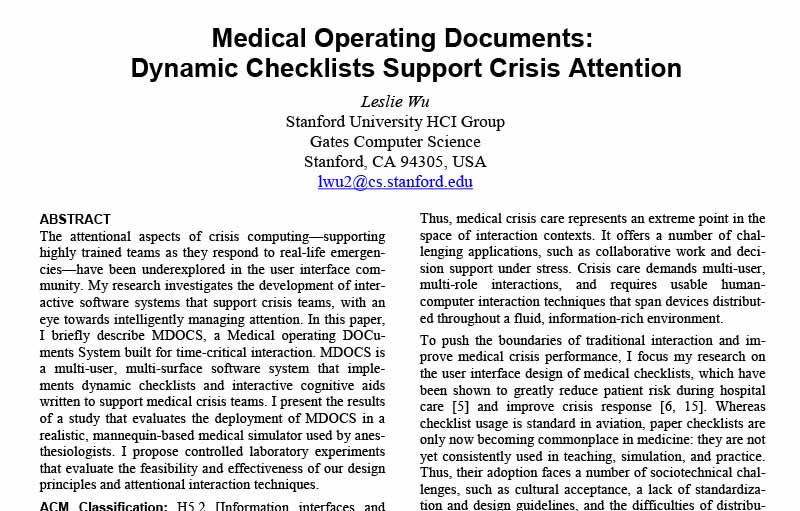
Dynamic
Procedure Aids
In an effort to reduce medical errors, doctors are beginning to embrace cognitive aids, such as paper-based checklists. We have designed an interactive cognitive aid for crisis care teams. This project is a collaboration between Stanford Computer Science and anesthesia professors in the school of medicine, specifically the Anesthesia Informatics and Media Lab. Based on insights derived from observing simulated medical crises at the Li Ka Shing Center for Learning and Knowledge, we are identifying opportunities to employ large-screen displays and coordinated tablets to support team performance. These Dynamic Procedure Aids address four key problems in checklist usage: ready access to the aids, rapid assimilation of their content, professional acceptance of their use in medical procedures, and the limited attention available to their users.
PUBLICATIONS
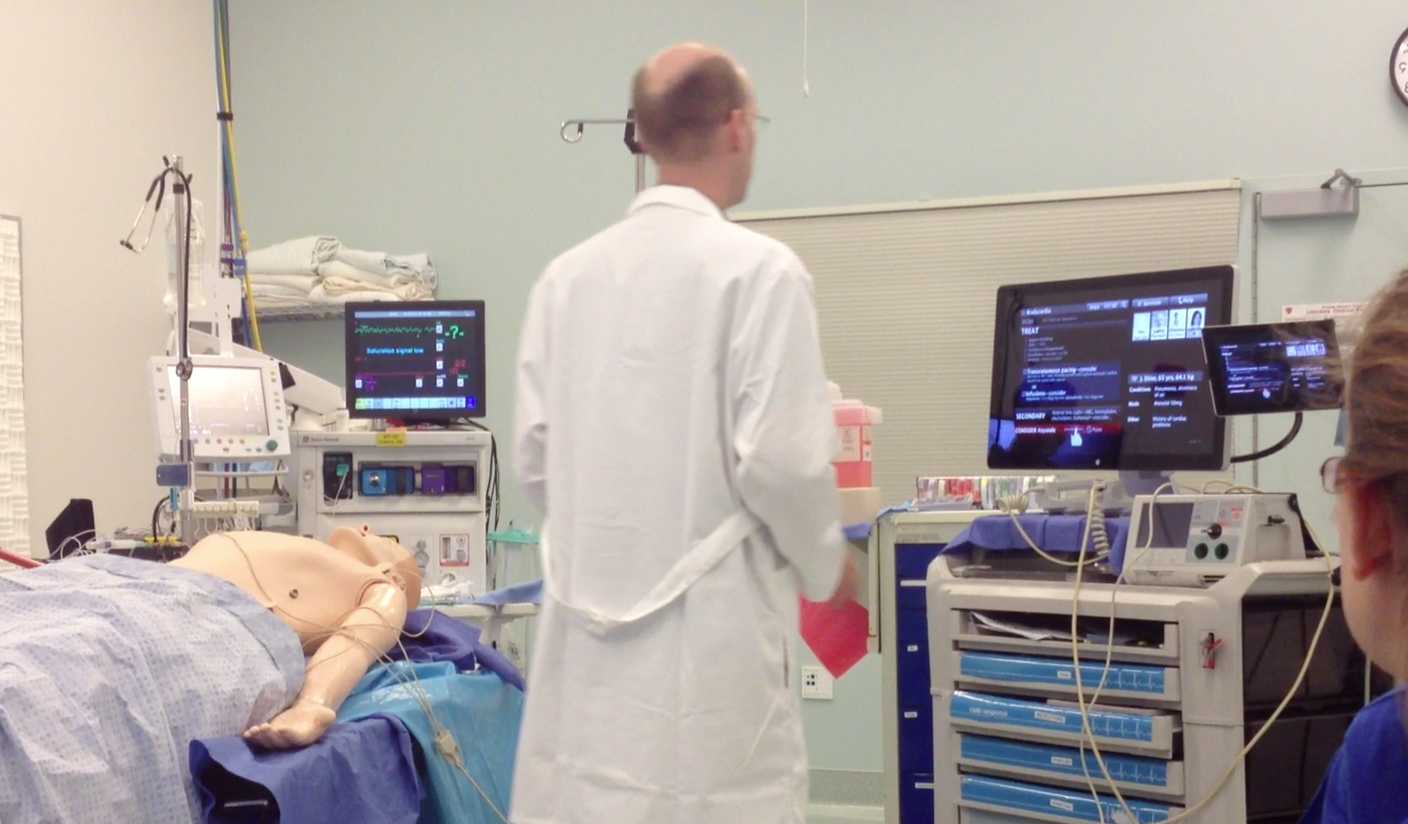
with Dynamic Procedure Aids
(ACM DIS 2014)
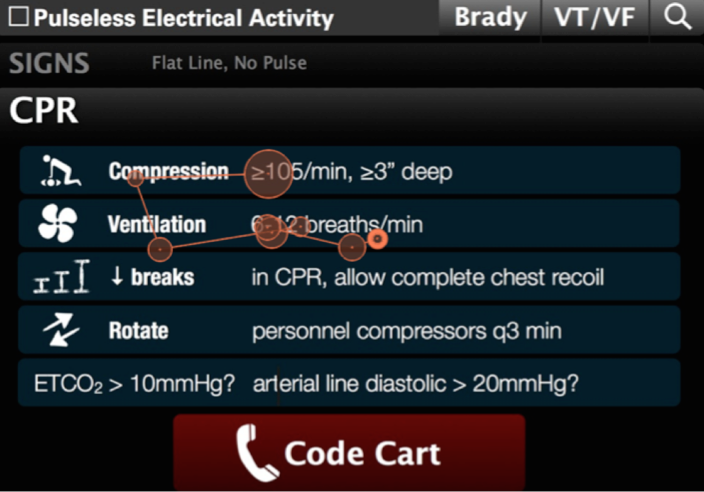
Step-At-A-Glance Crisis Checklists
(IEEE PervasiveHealth 2014)
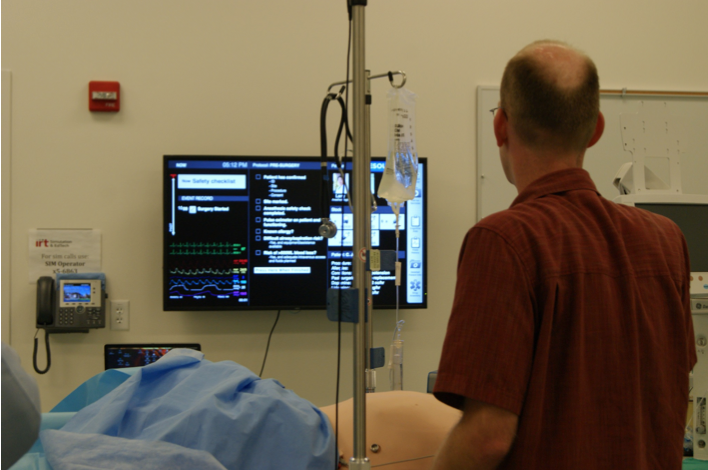
with Dynamic Procedure Aids
(Tech Report 2013)
